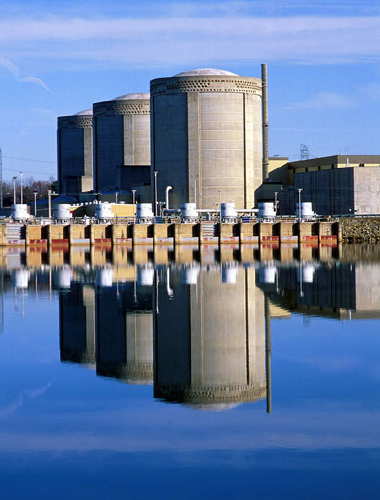Staffing levels steady at US plants
14 November 2008
US nuclear power plants have seen staff numbers go up and down over the last year, but a new survey of staffing levels has returned a net result of "no change".
 |
| PWRs, such as Oconee, need more staff (Image: Areva) |
Goodnight Consulting's annual look at the staffing levels of US nuclear power plants found that although average levels were up very slightly, at 0.25% higher than the previous year, the net effect across the industry was essentially neutral. While some plants had made significant staff reductions, others had been hiring to offset actual and impending losses to attrition.
Staff attrition was found to be due to a combination of factors, including retirement eligibility, demand for new build from utilities, vendors, regulators, and major component suppliers. Those plants that had cut staff numbers had done so for a variety of factors specific to each plant, but including staffing realignment after recovery activities, significant changes in support staffing approaches, and the shifting of operational personnel to new build activities at the same site.
The consultancy report takes into account all on-site staff including site employees, corporate nuclear support personnel and long-term contractors. It found that on average, a two-unit plant employed 0.58 staff per MWe of capacity, while a one-unit plant employed 0.94 staff per MWe, with a trend for standardized staffing models for such plants appearing. The US Nuclear Regulatory Commission (NRC) sets a minimum staffing level for the number of licensed operators and senior operators that must be present on site per shift depending on the number of operating nuclear units at the site and the number of control rooms operating those units.
Economies of scale?
The survey also found that fleet plants - that is, where more than one plant site is operated by a single company - had lower staffing levels than stand-alone plants. Staffing was slightly lower at boiling water reactors (BWRs) than at pressurized water reactors (PWRs): PWRs would appear to need higher staffing levels to support their more complex design relative to the BWR.
As countries such as the USA move to increase their nuclear generating capacity, the availability of suitably skilled and qualified workers has been a much debated point. Various countries have been launching recruitment drives to try to head off a so-called skills gap throughout the nuclear industry. The NRC itself is working to increase its own staffing levels by 600 over three years.